Often undervalued compared to Arabica, Robusta nevertheless plays an indispensable role in the global coffee industry. With its high caffeine content, intense flavor, and robust structure, Robusta is featured in most instant coffee products, creates thick crema in espresso, and remains the preferred choice in many Asian, African, and European countries. What exactly is Robusta coffee, what are its origins and characteristics? Let’s explore in detail below.
What is Robusta Coffee? Characteristics and Growing Conditions
Robusta is made from beans of the Coffea Canephora plant. It originates from central and western sub-Saharan Africa. Robusta coffee is renowned for its bitter taste and is primarily used in instant coffee, espresso, and as a filler in certain ground coffee blends.
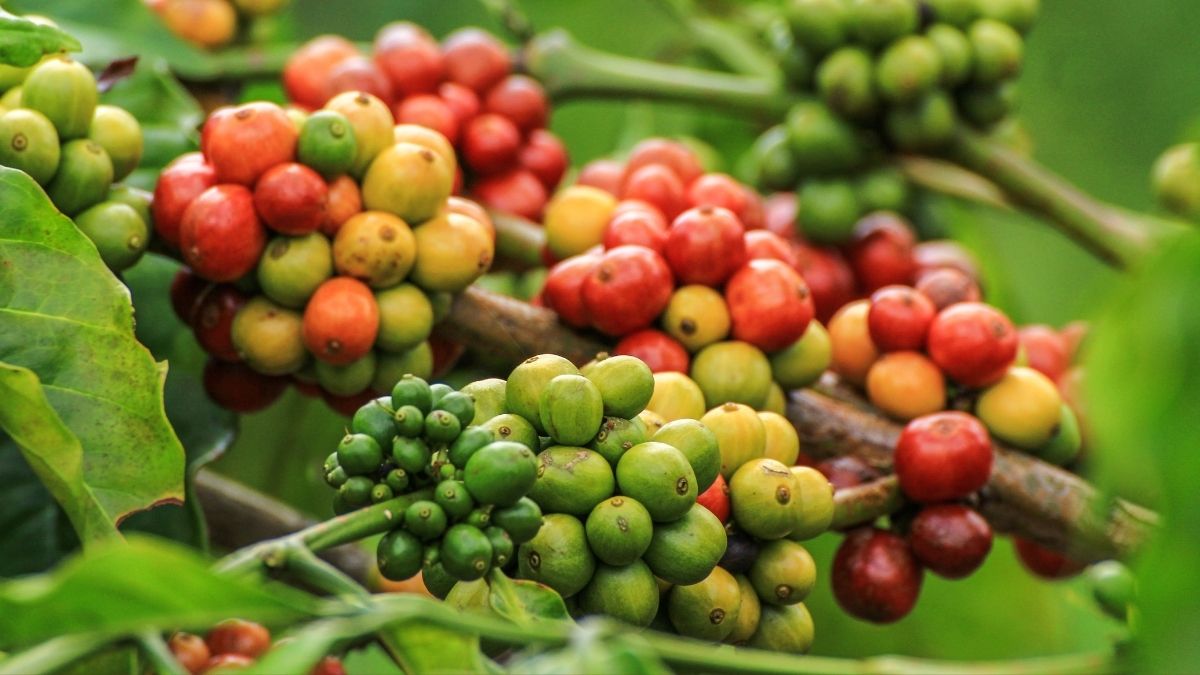
According to statistics, there are over one hundred coffee species, with Robusta being the second most popular coffee variety, accounting for 40% of global production. It ranks second only to Arabica, which comprises over 60% of worldwide coffee production.
Robusta coffee is the variety primarily grown in Vietnam. Since the 2000s, Vietnam has been recognized as the world’s largest Robusta coffee exporter.
Robusta also features several notable characteristics:
- High Caffeine Content: Robusta contains approximately 2.2–2.7% caffeine, nearly double that of Arabica (~1.2–1.5%). This provides a strong bitter taste, distinct aftertaste, and high alertness-inducing properties.
- Strong, Bold Flavor: Robusta has a pronounced bitter taste, low acidity, and less complex aroma than Arabica, but delivers a sense of “strength” and “weight” in the mouth, making it highly favored in Asian countries, particularly Vietnam.
- Bean Characteristics: Robusta beans are typically small, round, with a diameter of about 10-13mm, firm and solid. The center line of the bean is straight (while Arabica has a curved groove), making it very suitable for dark roasting.
- Disease Resistance: Robusta coffee has good resistance and is not as demanding as Arabica.
- Climate Requirements: Robusta thrives in humid tropical climates with average rainfall of 1,500-3,000mm per year. The optimal temperature range for Robusta development is between 22°C and 30°C.
- Terrain: Robusta coffee is typically grown in plains at altitudes from 200 to 800 meters above sea level. In Vietnam, Robusta growing regions are mainly in Dak Nong, Dak Lak, Gia Lai, with alluvial soil, clay soil, and fertile basalt soil with neutral to slightly acidic pH (5.5-6.5), providing the characteristic flavor of Robusta coffee.
- Lower Cost than Arabica: Due to high yield and low cultivation costs, Robusta typically has a lower market price than Arabica.
Origin of Robusta coffee
Robusta coffee originated from the tropical regions of West and Central Africa, particularly the Congo River basin area. This coffee variety was first discovered in the early 19th century by a Dutch botanist and was subsequently introduced for cultivation in several Asian countries such as Indonesia and Vietnam.
After being introduced to Asia, Robusta quickly developed and became one of the main coffee varieties. It is now produced in countries like Vietnam, Indonesia, and India. Robusta cultivation has provided important income for farmers and contributed significantly to the economies of these countries.
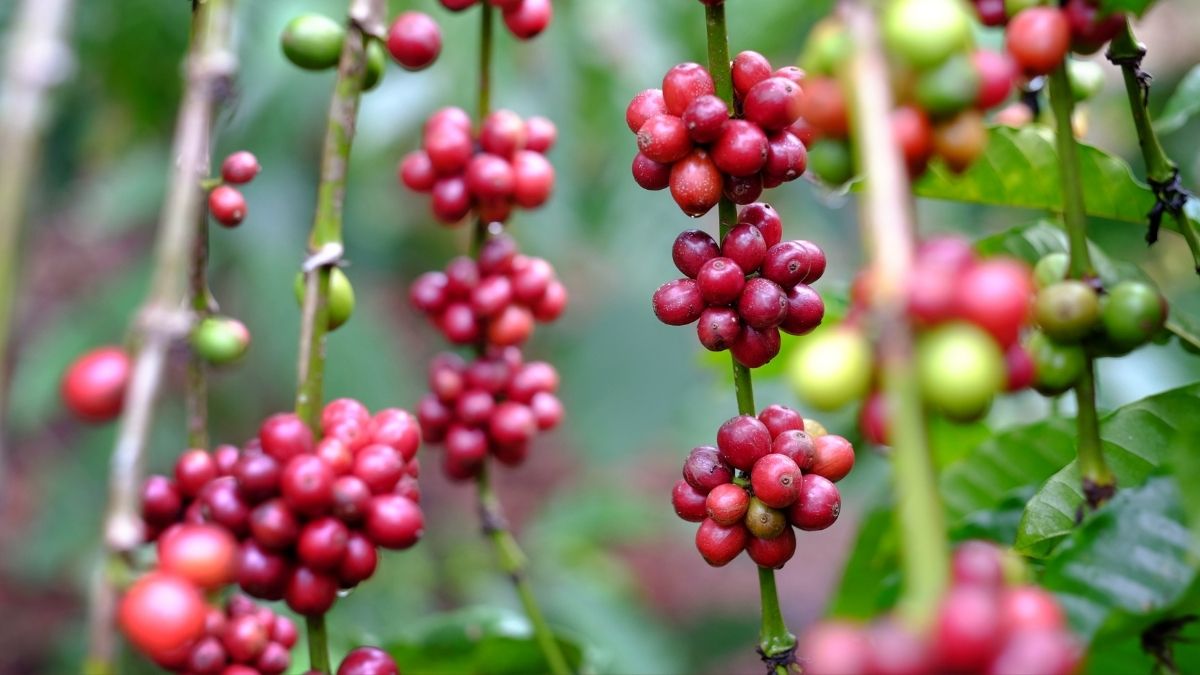
How to identify Robusta coffee
What makes Robusta coffee different from other coffee types, especially Arabica coffee?
According to researchers, these two coffee types have a special relationship. Robusta is considered to be related to Arabica. However, other studies suggest that Robusta is actually the parent of Arabica coffee.
To determine which view is correct, they analyzed the gene sequences of various coffee types. Results showed that Coffea Canephora crossed with another species called Coffea Eugenioides to create Coffea Arabica.
To identify Robusta beans from other coffees or from Arabica coffee, observe the coffee beans. Arabica beans have an elongated shape (elliptical), with a center groove that typically has a wavy form. Meanwhile, Robusta beans are smaller, somewhat round, and the center groove is a straight line.
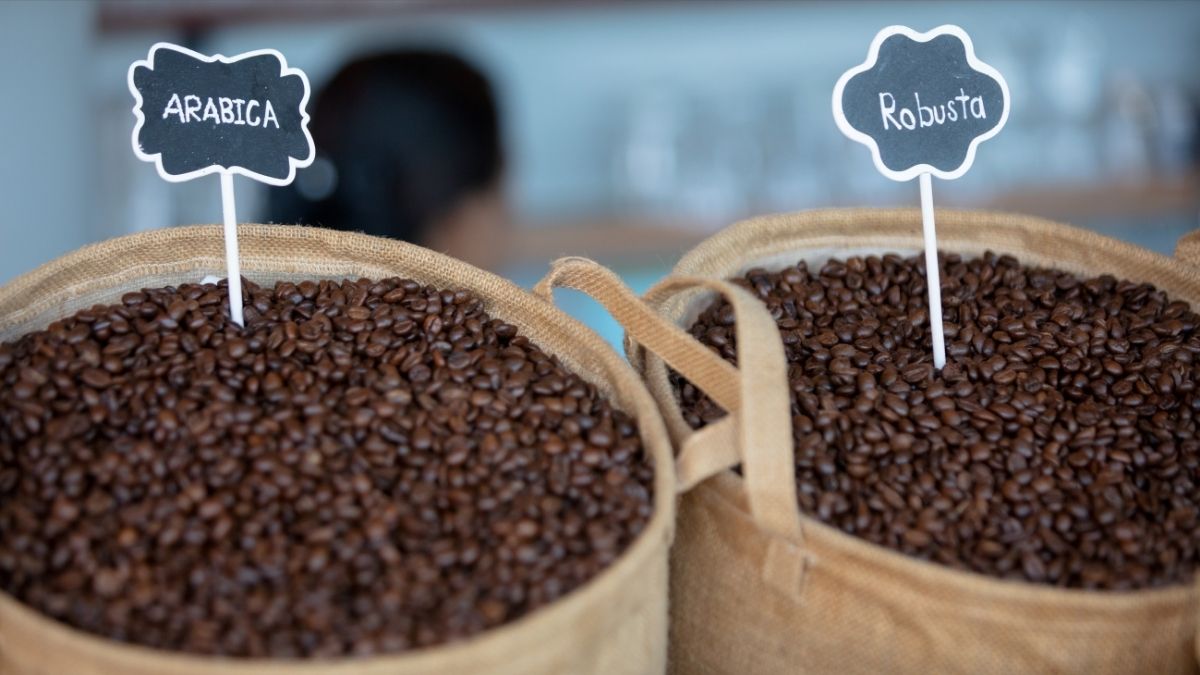
If you want to know the difference between Arabica and Robusta coffee in more detail, you can refer to the following article: Arabica vs Robusta Coffee Beans: Complete Comparison Guide
Types of Robusta coffee
In Vietnam, farmers divide Robusta coffee into two main categories:
- Robusta Se (Pure Strain): Pure origin without hybridization, producing more intense quality compared to high-yield varieties. Small but firm and heavy beans.
- High-Yield Robusta: This variety was selected and propagated vegetatively by the Highland Agriculture and Forestry Science and Technology Institute through grafting methods in the coffee replanting program, including main varieties: TR4, TR5, TR6, TR7, TR8, TR9, TR11, TR12, TR13. High-yield varieties provide high production and productivity, good pest and disease resistance, but quality is not as good as Robusta Se. They are used to extract chlorogenic acid (CGA), an antioxidant that helps protect nerves and reduces blood oxygen, or for making instant coffee.
Flavor profile of pure Robusta coffee
The flavor of Robusta coffee has always been considered less refined compared to Arabica. The taste is generally intense, astringent, and much more bitter than Arabica.
Depending on the processing method, the flavor of Robusta coffee will also differ. Currently, Message Coffee uses two processing methods for this coffee line:
- Traditional Robusta with traditional harvesting and dry processing methods by indigenous people, delivering intensely bitter, lightly astringent, and extremely bold flavors for traditional tastes.
- Robusta Honey with honey processing (semi-wet processing) selecting 97-98% ripe fruits, delivering intense bitter flavor with sweet fruit aftertaste in the final aroma layer.
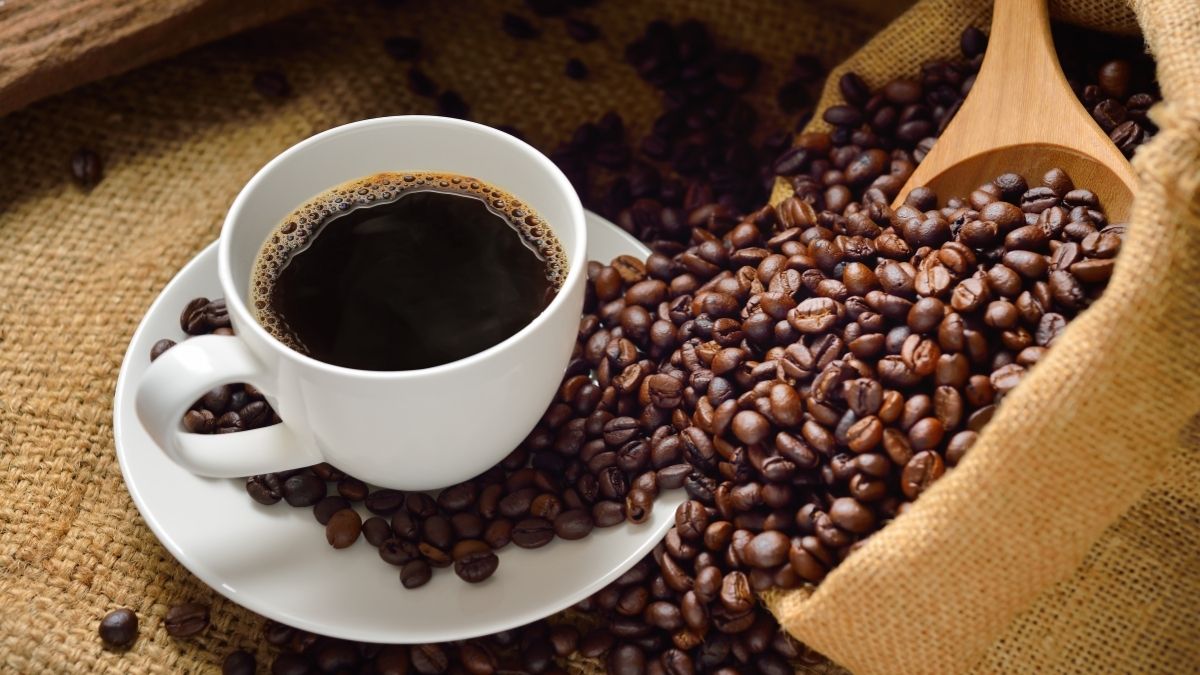
Within each pure Robusta bean also contains abundant Chlorogenic Acid (CGA). Although called acid, CGA doesn’t provide sourness but creates bitterness. When roasted, CGA breaks down into caffeic acid and quinic acid, combining with caffeine to create Robusta coffee’s characteristic bitter taste. Therefore, although Robusta has double the acid content of Arabica, it’s actually not sour but more bitter.
Distinguishing pure Robusta from adulterated Robusta
With pure coffee, we can easily distinguish through the following tips:
- Texture: Robusta beans after grinding are very light, with a fluffy, loose texture.
- Solubility: Pure Robusta powder will float for a long time on the water surface when sprinkled on cold water and fall down gradually without dissolving immediately.
- Foaming and Expansion: When brewing pure Robusta coffee, the coffee powder will expand and foam will appear. This phenomenon occurs most strongly within 10 days after the coffee is ground. Over time, the expansion when in contact with hot water will gradually decrease.
- Aroma: Pure coffee typically has a characteristic rich, intense aroma without musty or spoiled smells, which are signs of quality Robusta coffee beans.
Depending on individual taste preferences, people will choose their coffee “style.” However, selecting clean coffee without adulteration, also called pure coffee, is always the criterion that coffee connoisseurs aim for.
What are the benefits of Robusta coffee?
Robusta coffee (Coffea canephora) is the world’s second most popular coffee type, notable for its strong flavor and high caffeine content. According to international studies, 100g of pure Robusta coffee powder contains approximately 2.2-2.7g caffeine, nearly double that of Arabica. This is why Robusta is often used in strong-flavored coffee, helping drinkers quickly become alert and maintain concentration for many hours.

Not only rich in caffeine, Robusta coffee also provides beneficial compounds such as polyphenols (antioxidants), chlorogenic acid (metabolism support), and small amounts of protein and minerals. In 100g of Robusta powder, there are about 11g protein, 14g carbohydrates, 10-15mg potassium, along with some trace elements like magnesium and niacin (vitamin B3). These components help support metabolism, improve cardiovascular health, and promote energy metabolism.
Another notable benefit is the bold flavor and lasting aftertaste. Thanks to many phenolic compounds and less chlorogenic acid compared to Arabica, Robusta typically has a strong bitter taste, heavy mouthfeel, low acidity, very suitable for traditional Vietnamese coffee taste. This is also why Robusta is predominantly used in phin coffee, the popular brewing method in Vietnam.
Additionally, Robusta coffee contributes to creating thick, stable, and beautiful crema layers in espresso cups. With lower protein and sugar content than Arabica, properly roasted Robusta will produce more CO₂, helping maintain more stable crema. Therefore, in commercial espresso blends in Europe, Robusta typically accounts for 20-30% to increase boldness and aesthetic appeal.
Economically, Robusta is a coffee variety with 20-30% higher yield than Arabica, good disease resistance, and suitable for many soil types, especially basalt soil in Vietnam’s Central Highlands. This results in lower cultivation costs and selling prices, making it more accessible to consumers. In Vietnam, Robusta accounts for over 90% of total coffee production and is a major export commodity, contributing significantly to the agricultural economy.
Beyond that, Robusta is the main ingredient in instant coffee production thanks to its strong extraction capability, maintaining bold flavor even in powder or crystal form. Major coffee brands like Nescafé, Trung Nguyen, and Vinacafe all use Robusta to create bold-flavored, convenient instant coffee products that still satisfy users’ enjoyment needs.
Countries with the largest Robusta coffee production worldwide
Below are the world’s leading Robusta coffee producing countries, with the latest data updated to 2025:
- Vietnam leads the world in Robusta coffee production, accounting for approximately 40-42% of global production. Robusta is mainly grown in Central Highland provinces like Dak Lak, Lam Dong, Gia Lai. Estimated 2025 production reaches about 30 million bags (60kg/bag), equivalent to 1.8 million tons of coffee beans. Vietnam is not only a major producer but also the number one Robusta exporter, playing a key role in the global coffee supply chain.
- Brazil is the world’s largest coffee producing country, though mostly Arabica. However, Brazil still holds second place in Robusta production, contributing about 24-25% of global production. Robusta (called Conilon in Brazil) is widely grown in Espírito Santo and Rondônia states, mainly serving instant coffee production and export.
- Indonesia ranks third with about 13% of world Robusta production. Indonesian Robusta coffee is famous for its earthy, intense, and unique flavor, typically grown on islands like Sumatra, Java, and Sulawesi. This country is one of the major Robusta suppliers to European and Asian markets.
- India with about 5-6% of global Robusta production, India is gradually establishing its position through sustainably cultivated Robusta coffee meeting high export standards. Main growing regions are Karnataka, Kerala, and Tamil Nadu, which have ideal humid tropical climate conditions.
- Uganda is a representative African country with about 4-5% of global Robusta production. Unlike countries focusing only on export, Robusta in Uganda also plays an important role in domestic consumption. Grown naturally under forest canopy, Ugandan Robusta has distinctive flavor characteristics suitable for espresso blends and instant coffee.
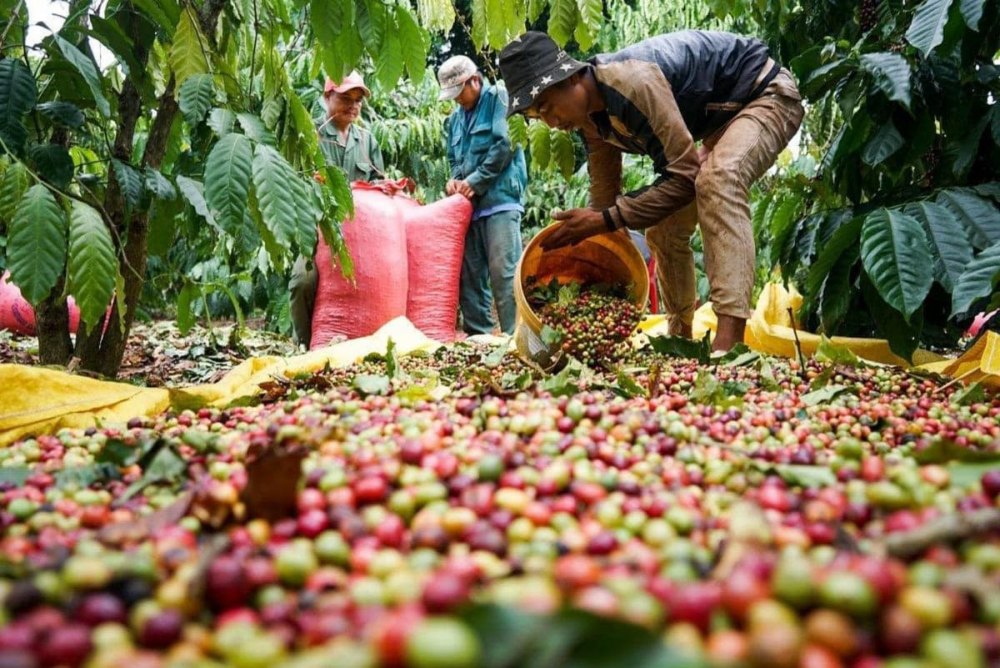
How much does Robusta coffee cost?
Pricing is one of the factors that makes Robusta coffee a popular choice worldwide. Compared to Arabica, Robusta sells for 30% to 50% less depending on the season and international market. This stems from growth characteristics: Robusta plants have good pest and disease resistance, high yield, and don’t require high altitude or extremely demanding climate conditions like Arabica. This significantly reduces cultivation, care, and harvesting costs, thereby reducing final product prices.
On the world market, Robusta coffee prices typically fluctuate between 2,200-2,800 USD/ton (London exchange, 2024 update), significantly lower than Arabica which trades on the New York exchange at 4,000-6,000 USD/ton. In Vietnam, the world’s largest Robusta exporter, domestic purchase prices for Robusta beans typically stabilize around 60,000-75,000 VND/kg, helping farmers maintain income and enabling businesses to easily plan production.
Thanks to competitive pricing and abundant supply, Robusta has become an ideal choice for instant coffee manufacturers, coffee blends (espresso blends), and commercial coffee. This is also why Robusta accounts for over 40% of global coffee consumption, despite potentially being more selective in taste compared to Arabica.
Why Vietnamese Robusta coffee beans are the world’s best?
Vietnamese Robusta coffee is not only famous for its production volume but is also considered the world’s best thanks to the perfect combination of natural conditions, traditional cultivation techniques, and distinctive coffee culture identity. First, the Central Highlands, Vietnam’s main Robusta growing region, possesses a tropical monsoon climate, average altitude of 500-800m, fertile red-brown basalt soil, and ideal rainfall of 1,800-2,500mm per year. This is nearly the most ideal ecological environment for Robusta plants to develop, producing thick-fleshed, firm beans with high caffeine content and characteristic bold flavor without harsh astringency.
Besides natural conditions, traditional planting and processing techniques of Vietnamese farmers are also a major advantage. Many regions have applied selective harvesting of ripe fruits, natural sun-drying on racks or brick floors to preserve full flavor and minimize mold. Some places also apply honey and natural processing, which are advanced techniques in specialty coffee, to elevate Robusta flavor quality, creating coffee lines with sweet aftertaste, high roundness, and exceptionally rich aroma, breaking the stereotype that “Robusta is only for blending.”
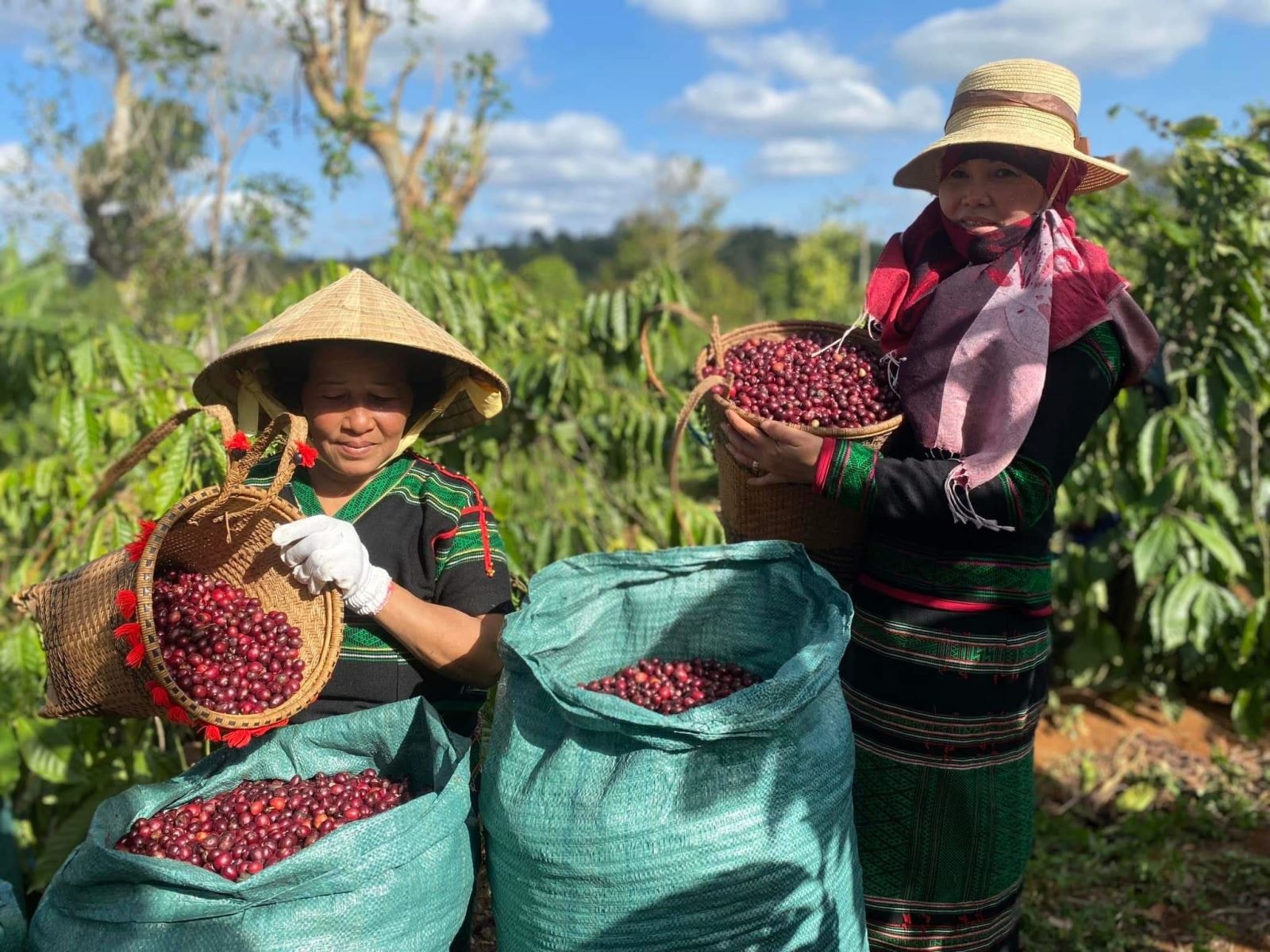
We must also mention that Vietnam is a pioneering country in exporting high-quality Robusta to the world. Domestic enterprises have continuously upgraded production processes, invested in quality testing, origin traceability, and achieved many international certifications like HACCP, HALAL, UTZ, Rainforest Alliance. This helps Vietnamese Robusta not only dominate global market share (over 40% of world Robusta production) but also excel in quality reputation and flavor consistency in commercial coffee blends, instant coffee, and espresso.
Finally, what makes Vietnamese Robusta truly special is how Vietnamese people enjoy and appreciate coffee. The slow, rich, bold phin coffee has become a cultural symbol, a unique “taste identity” found nowhere else. This drinking culture has motivated growers, roasters, and processors of Robusta in Vietnam to continuously improve, creating beans that are not only strong but also deeply complex.
All these factors – favorable nature, advanced techniques, unique identity, and global position – have helped Vietnamese Robusta not only be the “king of production” but also deserve the title “world’s best Robusta coffee” in the eyes of experts and coffee lovers worldwide.
Hello 5 Coffee: Premium Robusta coffee supplier from Vietnam
If Arabica represents the refined elegance of mountains and forests, then Robusta embodies the solid, bold character of the Central Highlands’ red soil. At Hello 5 Coffee, we don’t just honor Robusta as an ingredient but as a spirit. A spirit of awakening, integrity, and resilience. Below are the whole bean Robusta coffee lines currently selected and distributed by Hello 5 Coffee for professional roasting businesses:
- Robusta Culi: Strong and Profound Robusta Culi is a rare single-bean type, crystallized from special coffee plants. With bold taste, thick aftertaste, and high caffeine, Hello 5’s Robusta Culi suits those who prefer coffee with authentic Vietnamese character. Whether brewed with phin or machine, it produces thick, smooth, aromatic coffee.
- Robusta Honey: Refined Natural Sweetness This coffee line is processed using the Honey method, retaining part of the mucilage on the bean to create sweet aftertaste aroma, mild acidity, and round flavor. Hello 5’s Robusta Honey is not only strong like Robusta’s nature but also charming thanks to its ripe fruit and malt aroma layers.
- Robusta Clean: Pure from Heart, Clean from Bean Strictly controlled from planting, harvesting to processing, Robusta Clean provides truly clean coffee – no mold, no pesticide residues. Clear, decisive coffee flavor, suitable for cafes needing stable, health-safe ingredients.
Why choose Hello 5 Coffee’s Robusta?
- Transparent Traceability: All products can be traced to farm – growing region – processing method.
- Careful Classification: From commercial robusta to specialty robusta, each line is clearly classified for specific uses.
- Versatile Applications: Suitable for commercial roasting, specialty coffee, OEM, export, or retail.
At Hello 5 Coffee, we don’t just sell Robusta. We tell a new story about Robusta – the coffee once undervalued, now rising to assert its position through quality, depth, and Vietnamese pride.
